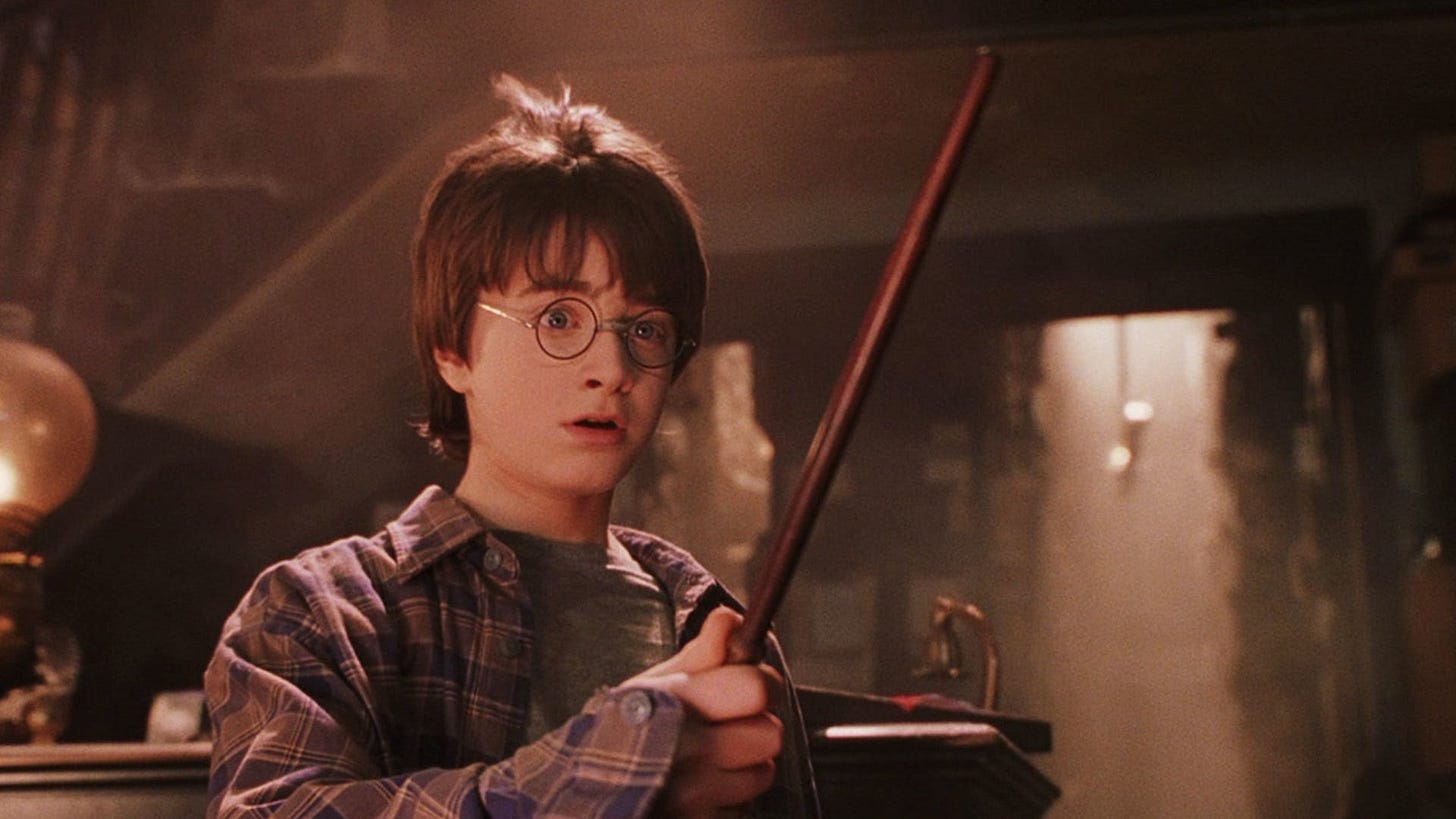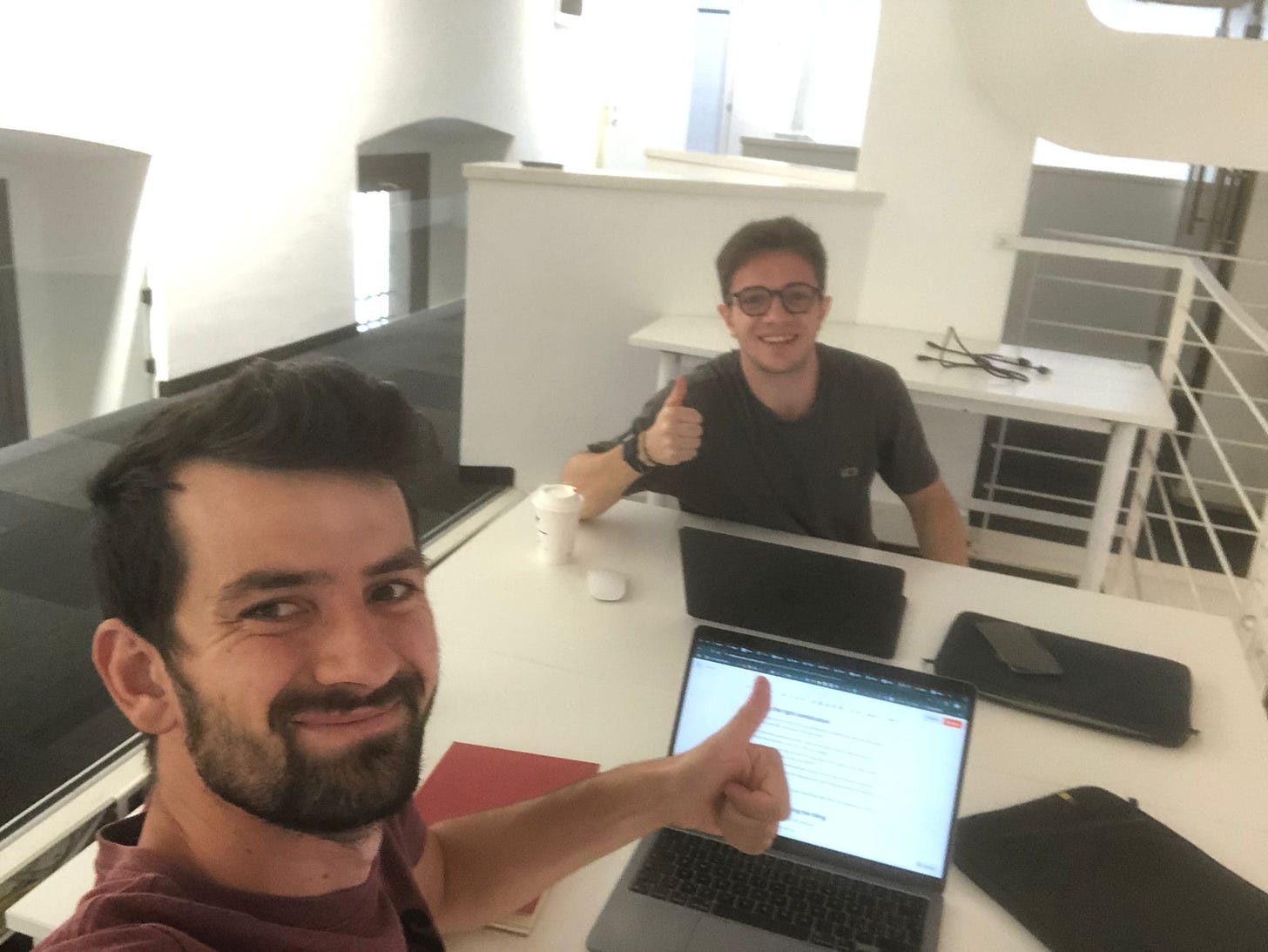Some newsletters ago, I wrote:
“It’s by pursuing a mission you really care about, or doubling down on something you do very well, or following your curiosity with illogical perseverance that you can end up building a great company.”
A reader responded:
“Few people are born with a mission; many explore and search for a founder/market fit. For generalist profiles (aka business grads), it’s not trivial to build a process (my emphasis) to develop a competitive advantage around a given problem. All this without even considering the opportunity cost of not pursuing other paths, markets, and opportunities.”
Somehow, this reminded me of “It’s the wand that chooses the wizard, Potter.”
Similarly, it’s the problem that chooses the founder.
Don’t overthink it.
No processes.
Start moving and building, and life will surprise you.
As an example, let me update you on my progress “building while freelancing”.
The spark ⚡️
In early April, I was asking around for advice on the next startup idea.
A few founders had already told me to look at the current batch of YC companies, so when an investor said the same over the lunch, I finally did it.
It was not a thorough exercise: I noticed I could search for the “government” tag and checked the handful of startups in that category.
I have a background in public policy and simply, I was curious.
Something caught my eye: AI that helps companies apply for government tenders.
I didn’t spend more than a few minutes on it.
The day after, I saw this post on LinkedIn of a German startup with exactly the same mission.
So I thought: “who knows, would that make sense in Italy?”.
You might recall the criteria I had set down for my next startup idea. AI for government tenders kind of ticked off all 4.
✅ big ambition
✅ B2B
✅ AI
✅ little competition
I brought it up with a few friends and let it marinate.
Freelancing 2 months
Between early April and the end of June, I was working on two big projects:
4cAi’s crowdfunding campaign
the Bologna AI Factory’s startup strategy, led by the IFAB foundation
I had little time for doing much else.
Still, I managed to take some calls with experts in the field of tenders.
Did a little bit of reading.
Most importantly, I caught up with Matteo, a developer and product manager. We took a long walk around Milan and talked about working on something together.
I mentioned the idea of AI for government tenders, and he said one of his freelancing clients had that pain point.
We agreed to keep in touch and meet up again the next time he’d be in Milan.
Building 4 weeks 👨🏼💻📞
Fast forward to mid-June.
My freelance gigs are winding down.
Matteo is in Milan for a week, and we naturally meet up in person every day.
The plan?
Moving.
He starts building a product, and I get down to reaching out to potential companies.
Warm intros, LinkedIn and email messages, cold calling.
As an aside, I had never done the latter (that didn’t make sense when selling big enterprise contracts at Plug and Play). It was kind of daunting but actually I soon found it fun.
Anyway, we learnt way more this way than we ever could have through planning and researching.
After exactly two weeks, we signed the first customer. We shipped multiple releases and talked to many companies daily. We hit our first hurdles.
We’re not stealth cause we’re not even a startup.
It’s a kind of exploration by shipping and selling.
And that’s the best way to do it.
Finding the right combination
The challenge at first is that there are multiple key elements, for each you have many hypotheses, and they all interact with each other.
ICP: the ideal customer profile - who are the early adopters that are quick to adopt your solution, even if it’s still very scrappy?
Distribution channels: how do the ICPs hear about you? what are the steps in the funnel that bring them to buy your MVP?
Problem: among many needs and pain points, which ones are the most pressing?
Product: which features are low-hanging fruits and which are simply not feasible with current resources?
To hit the first traction, you need to get something right about the combination of all four.
No substitution for doing the thing
How do you know if you like working with someone?
Well, start working on something and see.
Initially, I made the mistake of approaching potential customers for “user interviews”. Or asking for “feedback on our prototype”.
Now I’m selling our current product.
Of course, we resist jumping so directly into the real work because we feel we are not prepared.
But that’s the best way to collect real data.
Just do it 😉
PS if you know something about applying for gov’t tenders, or have friends that do, let me know! We are making the whole experience much better.




